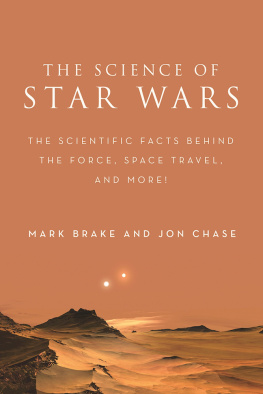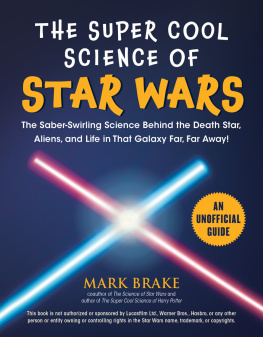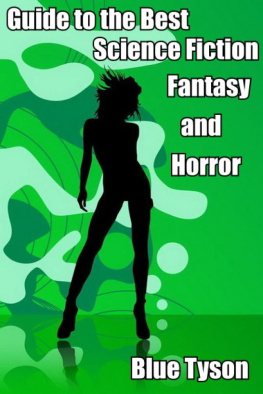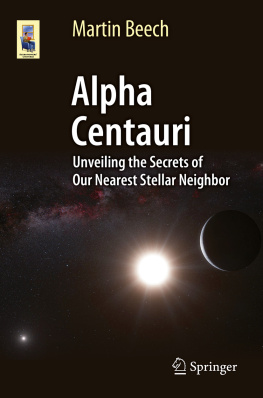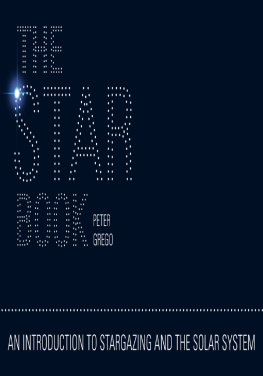Leon Golub - Nearest Star: The Surprising Science of our Sun
Here you can read online Leon Golub - Nearest Star: The Surprising Science of our Sun full text of the book (entire story) in english for free. Download pdf and epub, get meaning, cover and reviews about this ebook. year: 2014, publisher: Cambridge University Press, genre: Children. Description of the work, (preface) as well as reviews are available. Best literature library LitArk.com created for fans of good reading and offers a wide selection of genres:
Romance novel
Science fiction
Adventure
Detective
Science
History
Home and family
Prose
Art
Politics
Computer
Non-fiction
Religion
Business
Children
Humor
Choose a favorite category and find really read worthwhile books. Enjoy immersion in the world of imagination, feel the emotions of the characters or learn something new for yourself, make an fascinating discovery.

- Book:Nearest Star: The Surprising Science of our Sun
- Author:
- Publisher:Cambridge University Press
- Genre:
- Year:2014
- Rating:4 / 5
- Favourites:Add to favourites
- Your mark:
- 80
- 1
- 2
- 3
- 4
- 5
Nearest Star: The Surprising Science of our Sun: summary, description and annotation
We offer to read an annotation, description, summary or preface (depends on what the author of the book "Nearest Star: The Surprising Science of our Sun" wrote himself). If you haven't found the necessary information about the book — write in the comments, we will try to find it.
Leon Golub: author's other books
Who wrote Nearest Star: The Surprising Science of our Sun? Find out the surname, the name of the author of the book and a list of all author's works by series.
Nearest Star: The Surprising Science of our Sun — read online for free the complete book (whole text) full work
Below is the text of the book, divided by pages. System saving the place of the last page read, allows you to conveniently read the book "Nearest Star: The Surprising Science of our Sun" online for free, without having to search again every time where you left off. Put a bookmark, and you can go to the page where you finished reading at any time.
Font size:
Interval:
Bookmark:
NEAREST STAR
How did the Sun evolve, and what will it become? What is the origin of its light and heat? How does solar activity affect the atmospheric conditions that make life on Earth possible? These are the questions at the heart of solar physics, and at the core of this book.
The Sun is the only star near enough to study in sufficient detail to provide rigorous tests of our theories and to help us understand the more distant and exotic objects throughout the cosmos. Having observed the Sun using both ground-based and spaceborne instruments, the authors bring their extensive personal experience to this story revealing what we have discovered about phenomena from eclipses to neutrinos, space weather, and global warming.
This second edition is updated throughout, and features results from the current spacecraft that are aloft, especially NASAs Solar Dynamics Observatory, for which one of the authors designed some of the telescopes.
Leon Golub is a Senior Astrophysicist at the Smithsonian Astrophysical Observatory, and has been studying the Sun and solar-type stars since the Skylab missions in 197374 and the Einstein Observatory in 1978. He is the head of the Solar-Stellar X-ray Group at the Harvard-Smithsonian Center for Astrophysics and has been involved in building and flying cutting-edge space instrumentation for the past thirty years. He is Chair of the Solar Physics Division of the American Astronomical Society and has written many popular articles on subjects ranging from astronomy and philosophy to music criticism.
Jay M. Pasachoff is the Field Memorial Professor of Astronomy at Williams College. He is a veteran of 58 solar eclipse expeditions, which have taken him all over the world to study the Sun over about five sunspot cycles. He received the Education Prize from the American Astronomical Society and the Jules Janssen Prize from the Socit Astronomique de France; he is an honorary member of the Royal Astronomical Society of Canada. His undergraduate textbooks in astronomy, most recently the fourth edition of The Cosmos: Astronomy in the New Millennium, have been widely used. He is already involved in planning for education and public outreach for the 2017 total solar eclipse for which totality will stretch from Oregon to South Carolina and for which the whole of the continental United States and Canada will see at least a partial eclipse.
NEAREST STAR
The Surprising Science
of Our Sun
Second Edition
Leon Golub
Harvard-Smithsonian Center for Astrophysics
Jay M. Pasachoff
Williams College


32 Avenue of the Americas, New York, NY 10013-2473, USA Cambridge University Press is part of the University of Cambridge.
It furthers the Universitys mission by disseminating knowledge in the pursuit of education, learning, and research at the highest international levels of excellence.
www.cambridge.org
Information on this title: www.cambridge.org/9781107672642
First edition 2001 Presidents and Fellows of Harvard College Second edition Leon Golub and Jay M. Pasachoff 2014
This publication is in copyright. Subject to statutory exception and to the provisions of relevant collective licensing agreements, no reproduction of any part may take place without the written permission of Cambridge University Press.
First edition published by Harvard University Press 2001
Second edition published by Cambridge University Press 2014
Printed in the United States of America A catalog record for this publication is available from the British Library.
Library of Congress Cataloging in Publication Data
Golub, L. (Leon), author.
Nearest star : the surprising science of our sun / Leon Golub, Harvard-Smithsonian
Center for Astrophysics, Cambridge, Massachusetts and Jay M. Pasachoff,
Williams College, Williamstown, Massachusetts. Second edition.
pages cm
Includes bibliographical references and index.
ISBN 978-1-107-67264-2 (pbk)
1. Sun. I. Pasachoff, Jay M., author. II. Title.
QB521.G65 2014
523.7dc23 2013030423
ISBN 978-1-107-05265-9 Hardback
ISBN 978-1-107-67264-2 Paperback
Cambridge University Press has no responsibility for the persistence or accuracy of URLs for external or third-party Internet Web sites referred to in this publication and does not guarantee that any content on such Web sites is, or will remain, accurate or appropriate.
To the future generations for whom we hold the Earth in trust.
Contents
Preface
Our Sun is a fairly ordinary star, a bit brighter than most but not exceptionally so. There are many stars much bigger and brighter, while most stars are smaller and fainter. The Sun is not an especially variable or active star, and it has no enormous chemical or magnetic peculiarities. It is not a very young star, nor is it old and nearing the end of its life. It is, in short, truly exceptional in only one way: it is very close to the Earth in fact, at just the right distance to make life as we know it possible.
Most of us do not worship the Sun as did many in ancient civilizations, but we certainly should not take for granted the light and heat that it provides. Left to itself, the Earth would be a fantastically frigid rock at near absolute-zero temperature. If the Sun had been slightly more massive, its high temperature would have made the Earths surface hot enough to melt lead. A smaller Sun would have left the Earth unbearably cold and possibly subject to high levels of radiation, since smaller stars tend to have higher levels of activity, giving off devastating ultraviolet and x-rays. Distance also matters. Had the Earth been closer, we might be as infernally hot as Venus; farther away and we might have been as cold and arid as Mars. We are in the position of Goldilocks, living at just the right distance from a just-right star.
Does this mean that the planet Earth is unique and that we live in a providential best of all possible worlds? There are dangers with this way of thinking, flattering as it is to human sensibilities, because it may foster a certain complacency, a feeling that things could not be otherwise. Since indeed other planets in our Solar System do not so far appear to support life, this implies that life requires some fairly unlikely conditions in order to flourish. On the other hand, granted that the probability of finding Earth-like conditions is small, the number of planets in the Universe is very large (probably billions in our Galaxy alone). This obviously increases the statistical likelihood of habitable planets. On this view, the Earth is not so much providentially unique as merely rare.
This in turn implies certain responsibilities for its inhabitants. Since life as we know it appears to be possible within only a narrow range of conditions, it would be prudent to know as much as we can about the star that provides the bedrock conditions on which our existence is founded. Moreover our newfound ability to alter the Earths state on a global scale brings this need into sharp focus. For example, it is not enough for the Earth to be at the right distance from the Sun, and reflect back the right percentage of the solar light it receives. The Earths atmosphere is also of major importance in determining the global temperature. Without it, the Earth would be colder by about 33C (roughly 60F), and therefore a frozen lump of ice. Right now, we are making small but significant changes to the composition of our atmosphere that are beginning to be large enough to produce major unpleasant effects. Do the natural variations in the Suns brightness enhance or diminish these man-made effects? How do changes in solar activity affect the formation of ozone and atmospheric circulation and weather patterns?
Next pageFont size:
Interval:
Bookmark:
Similar books «Nearest Star: The Surprising Science of our Sun»
Look at similar books to Nearest Star: The Surprising Science of our Sun. We have selected literature similar in name and meaning in the hope of providing readers with more options to find new, interesting, not yet read works.
Discussion, reviews of the book Nearest Star: The Surprising Science of our Sun and just readers' own opinions. Leave your comments, write what you think about the work, its meaning or the main characters. Specify what exactly you liked and what you didn't like, and why you think so.


